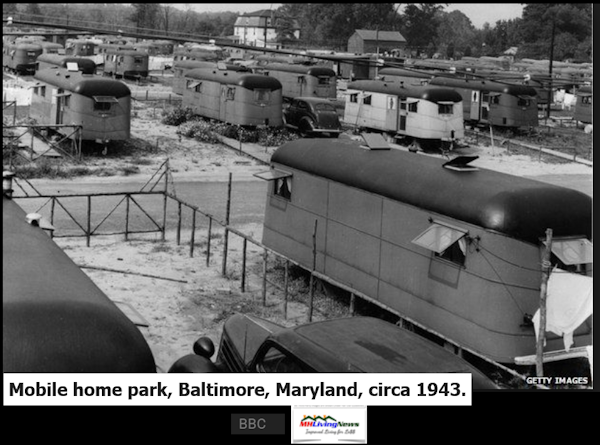“Lucy and Desi” were TV and movie stars from the 1950s and 1960s. The U.S. was rapidly changing in the post-World War II era. The Korean conflict came and went too, so veterans and millions of others were clamoring for affordable housing.
The nation was mobile, and millions were willing to move to get a better job.

Those cute and popular tiny houses seen today had their predecessors in the trailer houses built some 70 years ago. Towable, as opposed to motorized, recreational vehicles (RVs) became a distinctive industry from the trailer houses that later became mobile homes. It was evolutionary.
Some of that history is memorialized in the fascinating RV MH Hall of Fame and museum.
By the late 1960s, and early 1970s, mobile homes were seemingly everywhere.
Nearly half of new housing being sold in parts of the U.S. were mobile homes. Mobile home parks were developed to serve those needs.
Thousands of those mobile home parks still exist today. But many evolved, sometimes decades later, into what is better known as manufactured home communities (MHCs).
The wonder of the trailers and mobile homes of 41 to 60+ years ago was that what many saw as ‘temporary’ housing units are still around today. Sure, some show their age, but so does older conventional housing too.

True “trailers” – then and now – are towable by a properly equipped car or pickup truck.
Mobile homes became too big for a car to move. So those were no longer trailer houses.
Numbers of ‘parks’ were becoming more than just a pad with a parking spot or two. A growing number were developing amenities for their residents.
All of these mobile housing options made starting out in life easier for millions of young people and households. It also made retirement easier for golden agers too. Affordable living was a key.
The image of trailers and mobile homes during much of this era was positive, as the Lucy and Desi movie clip above suggests.
Trouble in Paradise?
60 Minutes and others did exposés on quality and safety issues involving some, but not all, mobile homes, in the late 1960s and early 1970s.
Builders of the higher quality mobile homes didn’t want their image tarnished by those who were building lower quality products.
So, a movement began to answer quality concerns by passing federal regulations in 1974. That was the start of what became manufactured housing.
“Manufactured home” isn’t a marketing term. It is a legal term, describing the code that the home is built to, so the name isn’t optional. A manufactured home has to meet quality and safety standards, that many mobile homes did not. That means, if you own a manufactured home, and call it a mobile home, you are devaluing your own property.
A manufactured home is a home built on a frame (chassis) designed according to the National Manufactured Housing Construction and Safety Standards, primarily regulated by the Department of Housing and Urban Development (HUD). Every new manufactured home gets a “HUD label,” and is certified by third party inspectors to meet construction, safety, and energy standards. Mobile homes did not have that same code advantage.

So, a manufactured home is not a mobile home or a trailer house. There have been no mobile homes built in the U.S. since June 15, 1976.
If a home had a HUD label, and was built after June 15, 1976, it is legally and properly called a manufactured home. The U.S. Census Bureau and others should create a distinction for those categories.
Even this short history reveals why it is entirely wrong to call a manufactured home a ‘trailer.’
Perhaps that term ‘trailer’ became more popular in the 1990s, due in part to unjust put-downs by people like political consultant James Carville, with his disrespectful comment picked up and carried by news media. That terminology has sadly hung around.
Frankly, another problem has been the self-evident lack of meaningful public education by groups like the Arlington, VA based Manufactured Housing Institute (MHI).
What is certain is that no one has to wait for anyone else to start using the correct terminology.
No one who lives in a modern manufactured home should be anything other than proud of their part of the American Dream of home ownership.
For those who own an actual mobile home or a true trailer house, consider this. You’ve got a collector’s item. Take good care of your home, restore it if need be. Because like a classic car, you may discover some day that it will be worth far more than what the original owner or you paid for it. ## (Retrospective news, analysis and commentary.)
Related Report:
(Third party images, content, are provided under fair use guidelines.)

Tony is the award-winning managing member of LifeStyle Factory Homes, LLC, the parent company to MHLivingNews and MHProNews.com.
 manufacturedhomelivingnews.com Manufactured Home Living News
manufacturedhomelivingnews.com Manufactured Home Living News



































